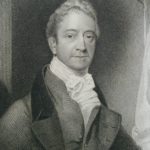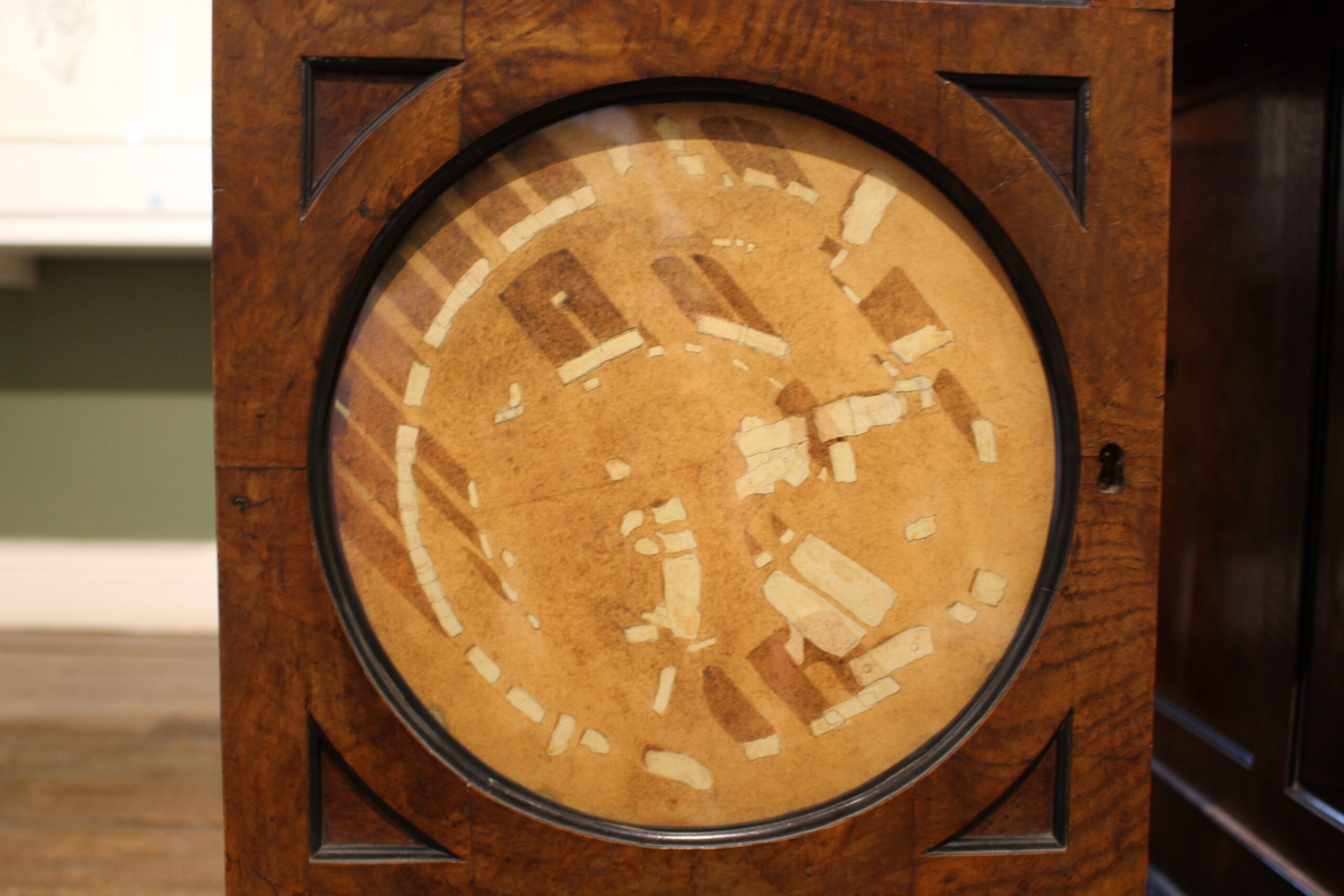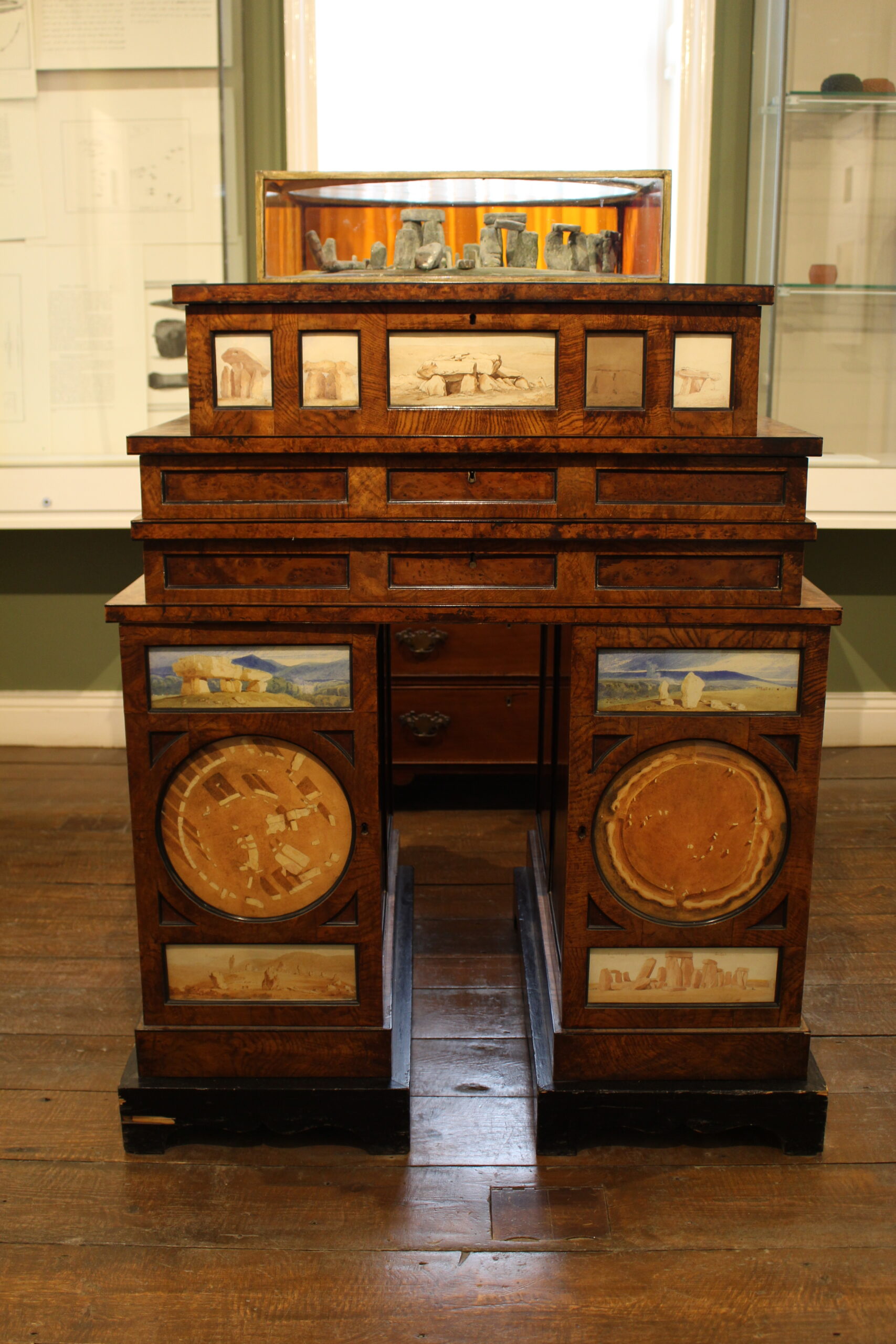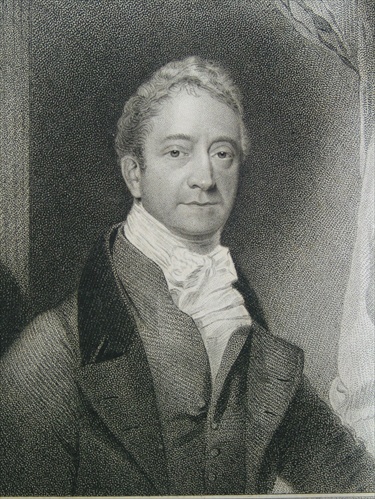This cabinet was made as a talking piece for a gentleman’s drawing room, once owned by the travel writer John Britton. In the top is a model of Stonehenge as it was when the cabinet was made in 1824. The sides of the glass are coloured red and orange so that shining the light of a candle would show how Stonehenge looks at dawn or dusk. The cabinet is made of mahogany and pine, with elm and maple veneer.
In one of the drawers is a model of Stonehenge as it may have been if it was complete. In a second drawer is a model of the Avebury landscape, based on a plan by the antiquarian William Stukeley. The drawer fronts are set with watercolours of prehistoric monuments in Wiltshire, Wales and the West of England by John Britton and leading artists of the day. The remaining drawers and cupboards held books, maps, plans and drawings.
The cabinet and many of John Britton’s books and papers formed the founding collection of the Wiltshire Archaeological and Natural History Society. Today the Society runs the Wiltshire Museum.


George Watson-Taylor
The Cabinet was owned by George Watson-Taylor of Erlestoke Park, who was the MP for Devizes from 1826-1832. He purchased Erlestoke Park for £200,00 He was the son of a slave trader and his fortune came from sugar produced on extensive estates in Jamaica, with over 1,000 slaves. He campaigned agains the abolition of slavery as well as the reform of Parliament. His extravagant expenditure and falling income following economic problems in the West Indies meant that he owed thousands of pounds and he sold the contents of Erlestoke House and let the Estate..
Watson Taylor is recorded in the UCL Legacy of Slave Ownership database. He was paid over £20,000 (worth £2.3m today) in compensation for the freedom of the slaves on his estates. They receved no compensation for their exploitation.







